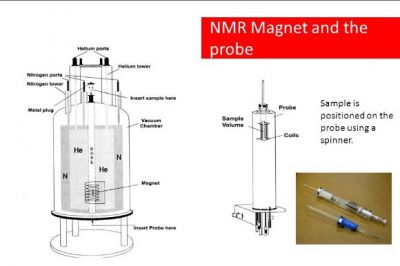Difference between revisions of "NMR from an Instrument point of view"
Jump to navigation
Jump to search
| Line 7: | Line 7: | ||
*Detector - antenna | *Detector - antenna | ||
| − | An NMR has a fourth component, a magnet, that is used to put the sample into an excited state. This excited state is then probed with the signal generator and the result detected with the detector. | + | An NMR instrument has a fourth component, a magnet, that is used to put the sample into an excited state. This excited state is then probed with the signal generator and the result detected with the detector. An instrument with a superconducting magnet is shown below. |
[[image:NMR_Magnet_and_the_probesmall.jpg|400px]] | [[image:NMR_Magnet_and_the_probesmall.jpg|400px]] | ||
Revision as of 00:36, 27 May 2020
This section focuses on the NMR instrument. All instruments have three basic components: a signal generator, a sample holder and a detector.
For NMR:
- signal generator - radio
- sample holder - such as an NMR tube in a spinner.
- Detector - antenna
An NMR instrument has a fourth component, a magnet, that is used to put the sample into an excited state. This excited state is then probed with the signal generator and the result detected with the detector. An instrument with a superconducting magnet is shown below.

